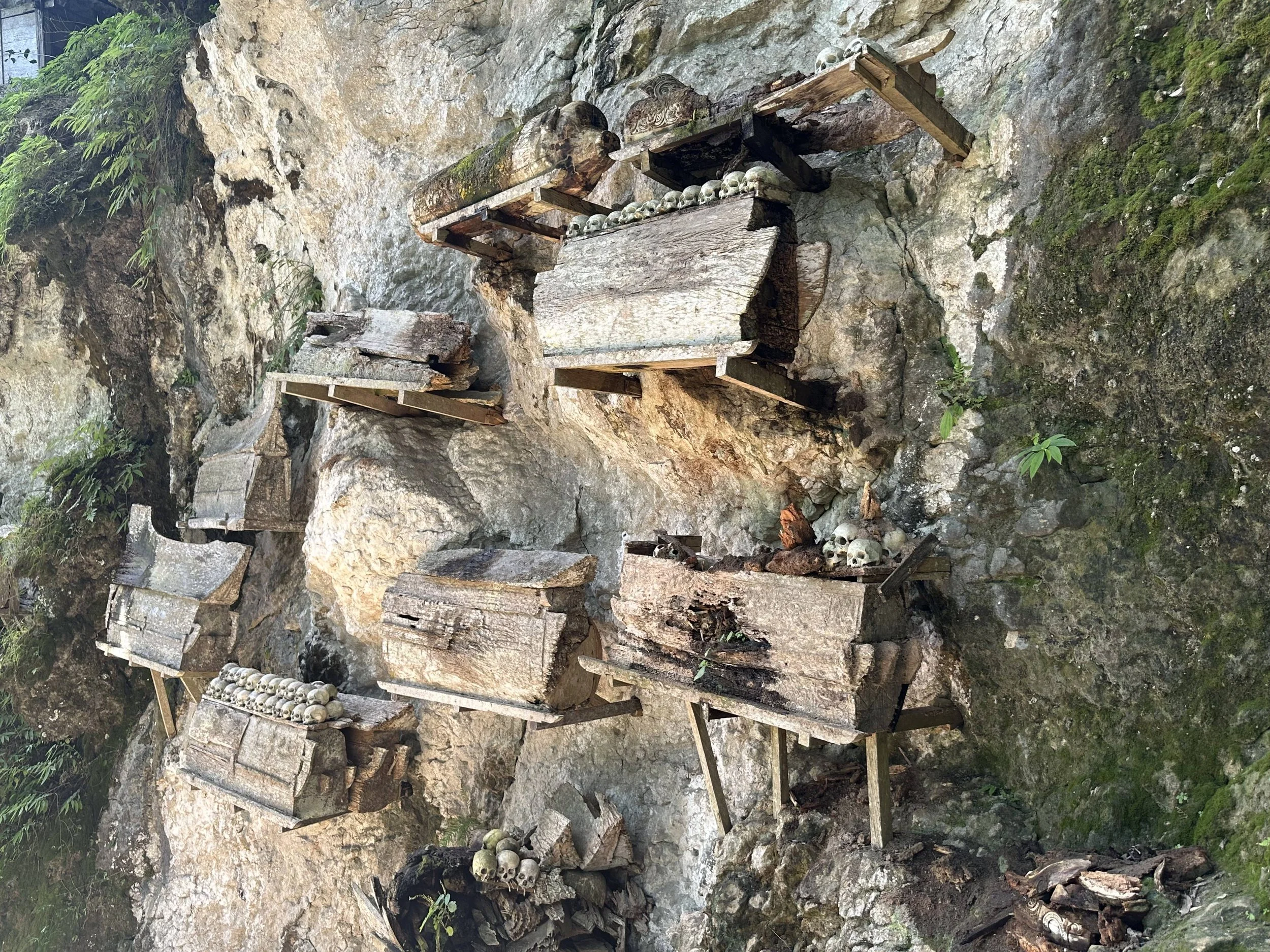Indonesian Death Rites
Tau tau statues in a burial cave in Tana Toraja
I’m just back from Indonesia and reflecting on their curious traditions around death and dying.
In Tana Toraja, on the island of Sulawesi, when a person dies they are treated as though they are only sick - meaning that their body is kept at home, and included in daily life, until such a time comes that their family can make arrangements for a funeral and burial.
Sometimes it might take weeks, sometimes months, and quite regularly even years, to save up for the expensive ceremony, so in the meantime the deceased loved one’s physical body gradually mummifies (preserved with formalin or traditional herbs). The family regularly bring meals and even cigarettes for their ‘sick’ relative, and visitors are expected to greet them as they would a living member of the household.
Funerals, when they do finally happen, are a lavish 5-day affair which many people travel for miles to attend. The various parts of the ceremony are an opportunity to laugh and joke with the deceased loved one for the last time, to perform symbolic song and dance, and to sacrifice many buffalo and pigs (the sacred buffalos, never put to work in their earthly lifetime, are now ready to accompany and serve their owner in the afterlife).
Afterwards, the coffin (if it is a traditional service) is usually hung up in a cave, or inserted into a tomb carved directly into a cliff face, guarded with protective wooden statues (tau tau). Then - and perhaps this is the bit that seems most unusual to western ears - every couple of years the dead person is exhumed for a reunion, so that their relatives can say hello, dust off their remains and pose for new family portraits together.
While in Tana Toraja I was privileged enough to attend part of a funeral, and also to meet my homestay host’s grandmother who had been ‘sick’ and laid out in a coffin for 2 years while they saved for the funeral.
It got me thinking about how different things might be if our relationship with death was less clinical and distant. Maybe the Torajan way goes to the other extreme, and pushes the limits of what many of us in different parts of the world would feel comfortable with for our own relatives, but it shows an alternative perspective and challenges the taboos we can take for granted.
How different could our relationship with our beloved dead be, if they were included in our daily lives more? If we felt less afraid of the physicality of death, and stayed even a little while in its presence to see what it could teach us? If there were space for more humour and intimacy in our relationships with those who have moved on from this world?
‘Hanging coffins’ on an ancient cliffside burial site at Ke’te Kesu village, Sulawesi

